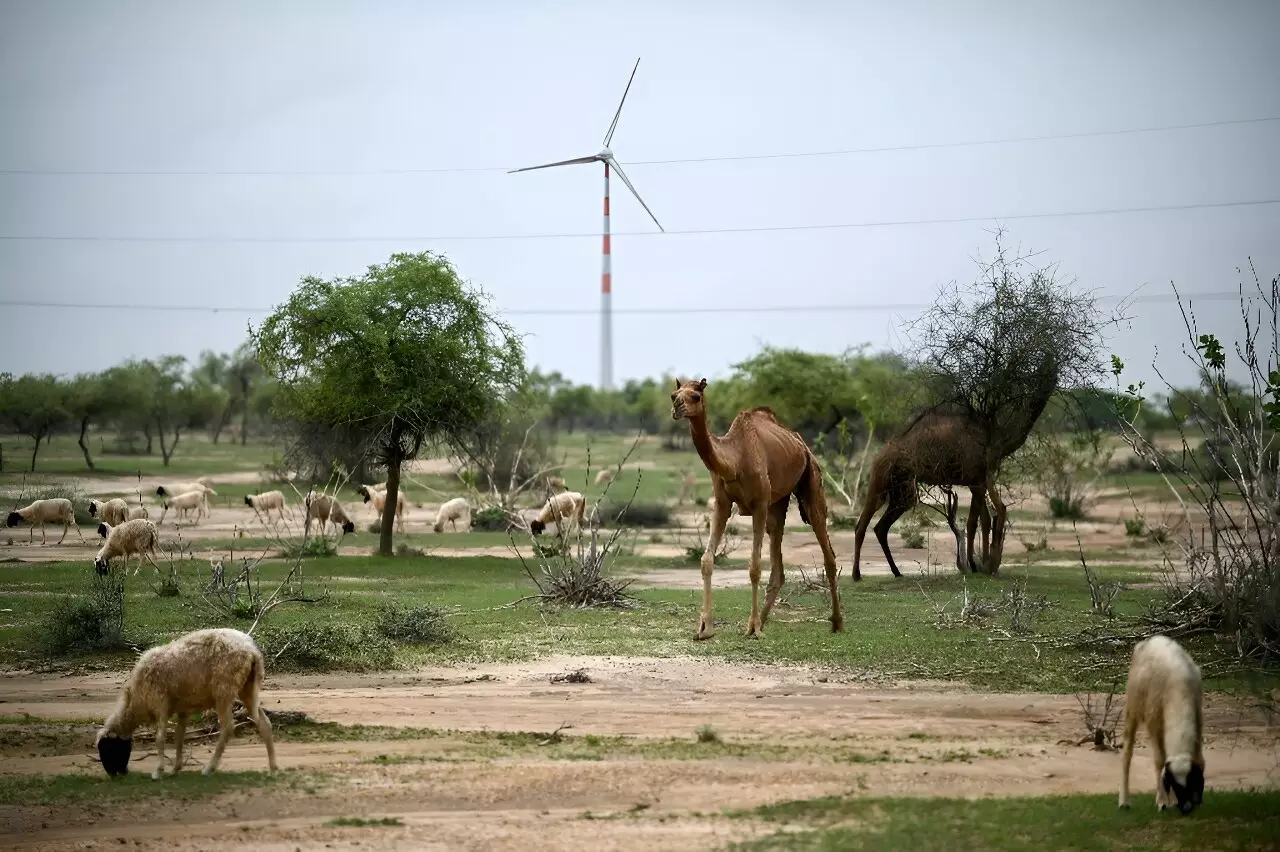India, with its growing population and pressing energy needs, has turned its gaze towards renewable resources, notably wind energy in the expansive Thar Desert. This transition to green energy, however, is not without controversy, particularly for the local communities who find themselves caught in a tug-of-war between national progress and their own livelihoods. This situation lays bare the complexities involved in balancing environmental sustainability and social equity, a challenge that resonates far beyond the borders of India.
As India aims to enhance its capacity for non-fossil fuel energy, the Thar Desert has emerged as a significant site for wind energy production. Companies have installed numerous turbines intended to alleviate the country’s dependency on coal and other fossil fuels, contributing to India’s status as the third largest emitter of greenhouse gases globally. Yet, this shift to cleaner energy has been accompanied by adverse impacts for those who call these arid regions home.
Elderly livestock herder Nena Ram illustrates the struggle faced by many locals: “The big companies have come here and built the windmills, but they’re useless to us.” For Ram and others, the wind farms have disrupted age-old agricultural systems, jeopardizing the traditional grazing lands critical for their livestock. With these operations generally focused more on large-scale energy output than local community livelihoods, many villagers have found their needs sacrificed at the altar of “sustainable” progress.
The delicate ecosystem of the region, which supports myriad plant and animal life, has also suffered due to the disruption caused by heavy construction vehicles. Grazing lands and sacred groves, known as “orans,” have been damaged, resulting in escalating water shortages that threaten their livestock-based economy. Thus, the very initiatives aimed at combating climate change seem to exacerbate the vulnerabilities of those on the frontlines of this environmental crisis.
The companies behind the wind energy projects, such as the Adani Group and Suzlon, assert their commitment to community welfare. They claim to provide health, education, and livestock support initiatives to enhance the quality of life for locals. However, with crop yields and milk production plummeting, communities feel betrayed rather than benefited by these infrastructural advancements. “The farmers are paying the price. Their land was taken away for the windmills,” states Jitendra Kumar from a local health clinic, a sentiment echoed by many in the region.
The daily existence of villagers is further strained by unreliable power supplies. Despite the proliferation of wind energy infrastructure, Jaisalmer’s residents grapple with frequent power cuts lasting for days, a situation described as “leading our lives in darkness.” The irony of producing renewable energy yet remaining without reliable electricity speaks volumes about the disconnect between the interests of corporate entities and the basic needs of local populations.
During scorching summer months, when temperatures can soar to 50 degrees Celsius (122 degrees Fahrenheit), these power interruptions become even more unbearable. Emergency relief has remained inadequate, highlighting the urgency with which this disparity needs to be addressed. The human cost of climate change mitigation is often invisible to those who advocate for such initiatives without regard for marginalized communities like those in Jaisalmer.
While the focus is often on the economic benefits of renewable energy, environmentalists raise alarms about the unexamined consequences of wind farms in the Thar Desert. The area, often dismissed as a barren wasteland, is actually rich in biodiversity, home to species like the critically endangered Great Indian Bustard. With the installation of power lines and wind turbines, these birds are increasingly at risk of extinction due to collisions and habitat disruption.
Although a Supreme Court ruling mandated the underground placement of power lines in crucial breeding areas, the decision was overturned amid industry pressure. This highlights a troubling trend where the urgency of renewable energy initiatives often overshadows ecological custodianship and community rights. As local activists erect memorials for the vanishing bird species, a poignant reminder of what is at stake surfaces — “If our birds and animals are taken away, what will we do?” asks Ram, encapsulating the desperate plight of communities caught in a web of progress that seems to prioritize profits over people.
As India strides towards expanding its renewable energy capacities, it must address the underlying social injustices that accompany such architectural ambitions. The juxtaposition of local desperation against national energy goals must prompt a reevaluation of how these projects are undertaken. Sustainable development can only be truly viable when it integrates the needs and voices of communities most affected by these changes. As the debate over renewable energy continues, a commitment to transparency, accountability, and respect for local ecosystems will be crucial in constructing a genuinely sustainable future for all involved.


Leave a Reply